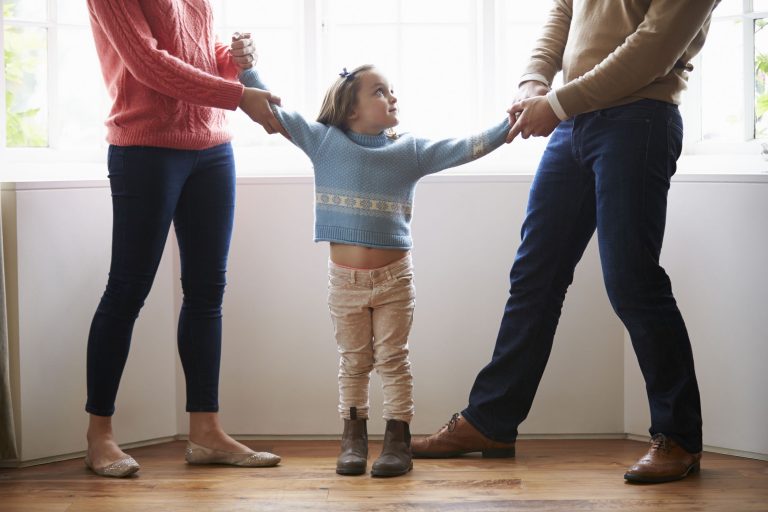
What Part Do Families Play In The Development Of Children?
The most recent findings on how families affect a child's development are covered on the Child and Family Blog. Some of the most important topics in this field of study are highlighted in this overview.
The blog summary examines "coparenting," or raising children as a team, and how it functions in the countless variations of households throughout the globe. It examines the interactions that caregivers and parents have with one another as well as with the children they look after (the “community of care"). It examines the ways in which children might profit from a variety of unique parental care situations. It examines the word "primary carer's" historical roots.
Three major factors are poverty, stress, and separation and divorce, which have an impact on how parents raise their children.
A Last Section Of The Overview Highlights Attachment
First Of All, What Is Child Development?
From birth to maturity, there are four stages in the development of a child:
-
Cognitive: how kids reason, explore, and solve problems; physical: how kids' bodies grow and develop
-
Social: the manner in which kids learn to engage with others around them
-
Emotional: children's comprehension of their identity and emotions
Through these transitions, people go from total reliance at birth to growing autonomy and independence as they approach adolescence and early adulthood.

A child's genetic make-up is closely linked to their developmental process. However, as development is a collaborative process, an individual's destiny is not predetermined by their DNA. The upbringing a youngster receives has a lasting impact on their future self. It is impossible to determine which factor has a greater impact: experience and inheritance are both significant factors.
Every kid goes through developmental phases, each of which lays the groundwork for the subsequent phase. Numerous steps have been explained. For instance, Jean Piaget identified four phases in the cognitive development of children:
-
The "sensorimotor stage" lasts for the first two years. Infants learn to do actions such as sucking, pushing, striking, and grabbing.
-
Within the "pre-operational stage," two to seven years. Although children can think, their capacity to apply reasoning to situations and draw conclusions only from their thoughts is limited.
-
"Concrete operational stage": seven to eleven years. Instead of only acting, children begin to solve problems via reasoned reasoning.
-
The "formal operational stage" lasts 12 to 15 years. Youngsters conduct methodical experiments by formulating, testing, and attempting alternatives to their ideas.
-
With a focus on social development, John Bowlby identified four stages: goal-corrected partnerships (when the child begins to consider the needs of the attachment figure), attachment (until the start of the third year, marked by distress when separated from attachment figures), attachment in the making (until 7-8 months, as the child shows increasing preferences), and pre-attachment (first 6 weeks).
Is It Nature Or Nurture?
The response is: You're asking the incorrect question! There was once a belief that the events that mold a child's growth and the genes inherited from their parents were entirely unrelated. However, the field of epigenetics has demonstrated that our experiences have an inherited effect on our DNA. For instance, children are more prone to develop anxiety if their parents—mothers or fathers—have had traumatic experiences in their past. Our experiences generate proteins that bind to our genes and modify their functions. These alterations could be inherited by future generations. The good news is that with assistance and fresh experiences, they can be undone.
The Family's Influence In A Child's Growth
Cooperative Childrearing

Families come in countless varieties both within and across cultures and throughout history. However, the capacity of parents, relatives, and other caregivers to collaborate as a team or "community of care" to raise each kid is a common trait shared by all effective child-rearing families.
The interactions that a kid has with their parents, caregivers, and siblings are crucial to their development. Children's early experiences influence their future development, particularly their attachment to parents and other important caregivers.
The way parents and other caregivers interact has a big impact on how kids develop as well. Strong child development is supported by connections that are constructive, engaging, and communicative within the "community of care."
The profound suffering that children endure when they see parental disagreement can be explained by the dependency of development on relationships. All families have conflict, but children who grow up in households where there is a lot of strife run the risk of suffering developmental harm. Children that have cooperative parents fare better than those who criticize each other's parenting style. Children of parents who struggle to achieve this balance may experience dread or anxiety and find it difficult to concentrate in school.
Is it significant if parents provide diverse types of care? Children gain from a variety of care experiences, such as being pushed to the limit in a game or receiving different types of care from their parents and grandparents. However, if these disagreements become too great—that is, if the caregivers cannot agree upon fundamental values and cannot collaborate—it confuses the kids and interferes with their healthy development, which can, in the worst situations, result in a child becoming hostile, violent, or passive.
Parenting has always included a team effort. Team parenting is essential to the survival of the human race, according to anthropologists who have researched the beginnings of the species. Compared to other animals, human children are reliant on their caregivers for a much longer period of time, and families usually raise numerous children at the same time. Over time, parents and other people assuming parental responsibilities (referred to as "alloparents") cover for one another, safeguarding the kid even in the worst-case scenario of a biological parent passing away (which used to occur significantly more frequently). Because of this strong parenting style, kids may flourish in a wide range of environments, including severe ones.
"Primary Caretaker"
Is it possible to have a single "primary carer"? A primary caregiver is a family member who provides more care than the other. Others have more shared care. In historical terms, the practice of one parent doing the majority of the parenting is relatively new, having emerged when families in various countries began to live in smaller household units and when employment began to shift outside the home. However, in these households as well as those where the parents have never been together or have split, others assist in providing for the children's needs and can have a significant impact on their development.
Studies reveal that what matters most is not the precise makeup of the family but rather the level of care and the collaborative nature of parents and caregivers. When there are variations in a child's development, there are other reasons for them. Research indicates that children may suffer from single-parent households' lower financial status, although children of same-sex parents gain from their closer parenting style. Children care about warm, collaborative parenting, which may occur in any type of family structure. You may also read this: Harsh Parenting Affects Children's Development
Divorce and Separation
During separation and divorce, there is a risk to the parent-child connection, especially the child's bond with his or her father. One of the repercussions of divorce on children who lose a parent-child bond is worse developmental outcomes later in life. This does not imply that every child does badly; rather, it indicates that there is a noticeably increased chance of doing so. Families may promote the development of their children and prevent negative behavior patterns by being aware of the consequences divorce has on children.
Scientists Urge More Priority to Protecting the Parent-Child Relationship to Limit the Effects of Divorce on Children, a review of divorce research on this website, argues that family law should prioritize preserving all parent-child relationships that are meaningful to a child, not just "at least one." Additionally, given that shared parenting and shared physical custody lessen the detrimental impacts of divorce and separation on children, parents contemplating separation or separation may want to think about these options.
Destitution

Parenting is far more challenging when one is poor or disadvantaged. This is partly because parents face significant hurdles as a result of these diseases. Also, poverty has a significant impact on a child's development.
As early as age three, children from underprivileged homes may lag behind their classmates in language development and academics. They frequently struggle to concentrate in class, think clearly, and control their emotions.
Neuroscientists provide good news, though: these effects are neither predetermined or hardwired. In order to lessen the danger to a child's development, parents may and should play a significant role in regulating and managing the stress of poverty.
When parents communicate and demonstrate how to handle anger and frustration, it's known as emotionally supportive parenting, and it can help children from low-income families grow stronger. Furthermore, children in low-income households are more likely to have positive social and emotional outcomes if their homes are kept clean and their parents provide adequate supervision.
Tension
Stress plays a major role in why poverty and disadvantage make parenting more difficult. Parents who experience ongoing stressors including food insecurity, poor income, unemployment or underemployment, or homelessness may find it challenging to maintain the best possible functioning of their families. This in turn affects how children develop.
Children are safeguarded by loving, cooperative parenting. In fact, loving, encouraging relationships can counteract the behavioral and other consequences of hormone excess as well as lower the stress hormones that are generated during difficult times. (See How Stress of Adversity Affects Children's Biological and Behavioral Development, and How Stress of Adversity Affects Children's Biological and Behavioral Development, But Good Care Can Reverse The Damage.)
Attachment In Early Childhood Development
A strong, enduring link that unites people is called attachment. The creator of attachment theory, developmental scientist John Bowlby, described attachment as a "lasting psychological connectedness between human beings." Parenting involves attachment in a big way.
According to attachment theory, infants require human interaction from infancy. They quickly learn to be picky about who they interact with and form attachment bonds with their primary caretakers. Because of these bonds, which developed as a survival strategy, parents and other caregivers have a crucial role in a child's development.
Nearly every youngster has at least one attachment figure they can rely on. Researchers have shown that children have what is known as a "secure attachment relationship" with their primary caregivers when those caregivers are consistently supportive, attentive, and available to them. Infants have the confidence to investigate their surroundings when they can easily recognize that their caregiver is accessible. On the other hand, relationships marked by ambivalence, avoidance, or disorganization are more likely to emerge among children who get care that is less dependable, consistent, and responsive. Even while these early ties are still crucial for children to have, they may find it more difficult to feel safe and supported in other relationships later on.
Are there several attachments or just one? In civilizations and at a period when many children were raised primarily by one parent, typically the mother, attachment theory was created. As a result, the notion that a child's "primary attachment" is to a mother caregiver emerged. While multiple attachments have been increasingly common across history and cultures, this is still true for certain children. Secure and insecure connections may coexist in a child's developmental experience, raising the possibility that unfavorable interactions with one caregiver may be offset by favorable interactions with another.


